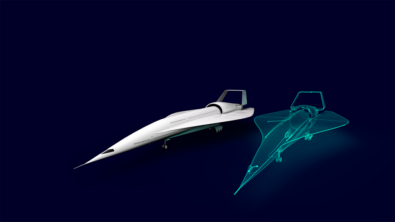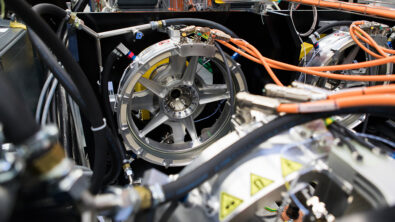Siemens’ advantage with connected vehicles

You’re not imagining things: traffic on roads is getting worse. Congestion records continue to be broken all over the United States and the world, and the problem won’t get better on its own.
How do we fix this? Adding autonomous cars to the road isn’t the answer, because a traffic jam with autonomous cars is still a traffic jam. But the answer could lie in using connected vehicles to manage vehicles on the road, plus intelligent traffic systems to efficiently use existing road networks.
The Siemens Intelligent Traffic Systems (ITS) division is working on an answer to this challenge, and I spoke with Marcus Welz, the CEO of Siemens’ North American ITS division to learn more. Marcus has been with Siemens for more than a decade, and he’s spent most of his career at Siemens in the ITS division. He’s worked with customers from all over the world in global project management, global sales and product management roles. In 2007, Marcus even spent time in Dubai aiding the city as it put an innovative advanced traffic management system into place, and that system continues to be one of the world’s best.
 Marcus Welz, whom I interviewed, is the CEO of Siemens’ North American Intelligent Traffic Systems division.
Marcus Welz, whom I interviewed, is the CEO of Siemens’ North American Intelligent Traffic Systems division.
Marcus and I began our conversation by how he envisions the future of transportation and the challenges we’ll see with mobility and connected vehicles.
Our cities are constrained, and we’ll certainly will need more cars on the road in the future as we cater to the needs of more people. But there is no room for more streets: we just need to move more efficiently on the roads we have.
This efficiency improvement could take many forms. For instance, if you’re the sixth or seventh person at a traffic light today, when it turns green, the first person goes, and then there is a delay between the start of each car in the line – and maybe a real big delay if anyone is texting! As the seventh person, you may not even get a chance make it through the light. With car-to-car or car-to-infrastructure communication, all seven could start at the same time, making your trip and overall traffic flow more efficient.
But it isn’t all about cars. When we use our smartphone to hail Uber or Lyft we get a car ride, but it will need to be more than just a car in the future as other forms of transport could use road space more efficiently. It will have to be the optimal combination of car, bus, train, bike and walking. We can each decide what optimal is, such as optimizing the trip based on cost, time, energy usage and even the ability to exercise – and have all of this planned and billed across different transport providers, right from your smartphone.
In this article, Marcus and I talk about how Siemens’ history with traffic management will be a big advantage as the market moves toward connected vehicles and vehicle to infrastructure communication, all part of the mobility ecosystem.
ED BERNARDON: There are a variety of companies involved in the transportation revolution, large corporations and start-ups making autonomous cars, Big Data and software companies doing traffic data analytics.
One thing you mentioned that’s very interesting is that Siemens has been in the traffic management business for a long time, ever since the first traffic light. How does this experience which Siemens has built over 100 years going to be an advantage in the marketplace as you try to solve the problems you just outlined?
MARCUS WELZ: First, let me start by saying that I think that the problem is so big that it won’t be solved by one company alone.
If we talk about technology, we are talking about an open system architecture which allows interoperability of various providers to be part of such a mobility ecosystem, especially if we have a traffic management system which controls traffic signals and other road networks in a city.
At the same time, we maybe also can get data from self-driving vehicles to get a better, more accurate and complete picture. It is a lot of data coming in, and there will be a lot of services built on that, and applications which can come from third-party providers.
But I think what makes us unique at Siemens is certainly the fact that we have a very strong domain know-how. This is different from a lot of vertical software companies. We know exactly the challenges, whether this is for security or safety of a traffic signal system. We also know how to deal with a lake of data in an advanced traffic management system, and how to maybe build a use case which really matters in order to reduce delays and travel times – and have a system with a meaningful impact based on the traffic engineering, data analytics competences and IT competences available.
The second one is certainly also that we are looking at mobility not only from the road network perspective. We have competencies around rail, around public transport and also in the operation of these systems. So we are building these systems, we are operating these systems and we are integrating those systems towards our customers.
I think that the fact that we have a broad know-how looking at mobility as a whole, and also this domain know-how, helps us to realize use cases which really matter, and solving real problems and using the data in a fashion to create value to road users and cities — I think that’s what makes us unique.
This concludes part two of my conversation with Marcus. In part three, we highlight the potential roles vehicle to infrastructure communication could play in keeping drivers in autonomous cars – as well as human-driven cars – safe.
 An artist’s concept of how connected vehicles will communicate with each other
An artist’s concept of how connected vehicles will communicate with each other
About the author
Edward Bernardon is vice president of strategic automotive initiatives for the Specialized Engineering Software business segment of Siemens PLM Software, a business unit of the Siemens Industry Automation Division. Bernardon joined the company when Siemens acquired Vistagy, Inc. in December, 2011. During his 17 year tenure with Vistagy, Bernardon assumed the roles of vice president of sales, and later business development for all specialized engineering software products. Prior to Vistagy, Bernardon directed the Automation and Design Technology Group at the Charles Stark Draper Laboratory, formerly the Massachusetts Institute of Technology (MIT) Instrumentation Laboratory, which developed new manufacturing processes, automated equipment and complementary design software tools. Bernardon received an engineering degree in mechanical engineering from Purdue University, and later received an M.S. from the Massachusetts Institute of Technology and an MBA from Butler University. He also holds numerous patents in the area of automated manufacturing systems, robotics and laser technologies.


